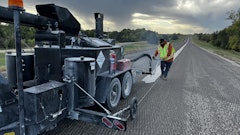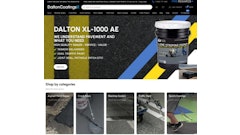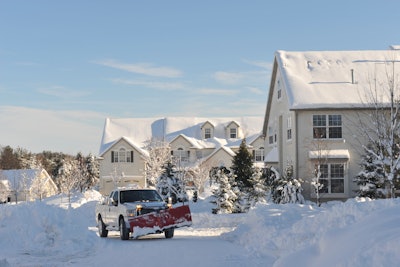
While snow and ice management services present many great opportunities for business growth and financial success, learning how to find the delicate balance in all facets of your business model is sometimes not as easy. This article is going to offer a broad overview of the various snow market segments, contract types and business strategies to help you identify ways for greater snow business success. This snow business primer can help you learn how to develop a strategic plan that differentiates you from competitors and positions you as the choice provider in your market. You can also learn a few tips on how to prepare yourself to agree, counteroffer or simply say no to certain contracts when the contract opportunity cannot be fulfilled effectively or does not allow you to develop a mutually beneficial client-contractor relationship.
First, you must know that everything discussed must be strategic to your organization. You must clearly identify your target niche and stick to it. Secondly, snow removal is really not seasonal; it’s a year-round process of networking, educating your audience and timing yourself for striking when the iron is hot. Lastly, you must understand the snow industry is mostly controlled by Mother Nature, and therefore, snow comes and goes … and sometimes never comes. You must build your snow business by knowing the different types of contracts—the advantages and disadvantages of each—and what it takes to keep the lights on during a slow winter.
Identifying Your Target Niche and Sticking to It
To identify your niche, you need to ask yourself some questions. For instance, what do you enjoy doing most? Even within the snow industry, there are going to be some things that you like doing more than others. These are the clients you want to serve first. Examples may include:
- Class A corporate accounts.
- Small shopping centers and strip malls.
- Large shopping centers, malls, distribution centers, hospitals and educational institutions.
What do you not want to do? Almost as important as figuring out what you enjoy doing is figuring out what you don’t enjoy doing. Examples may include:
- Homeowners’ associations, apartment complexes and high-rise buildings.
- Snow management companies, a.k.a. third-party work.
- Residential accounts.
Where do you have the most experience? Only you truly know your experience level and that of your company. Your confidence, your abilities and your resources should guide this answer.
What is your target market? While you may start with a broad market (as in, anyone who needs snow services), you’re going to need to narrow it down from there. How can you break your market into more specific target segments? Examine your fleet and your 10-mile footprint. The answer can define your demographic and target niche. Next, ask yourself, who values my services? Some clients may value your services more than others. Think about the clients you work for, and identify the ones who understand the value of what you do, how you do it and who are happy to pay your fees.
Selling Is Year-Round, Not Seasonal—Strike When the Iron Is Hot
You can break the year down into different selling seasons. The sales cycle could be as follows:
- April through June. These proposals might leave a sour taste in your target audience’s mouth. The pay-a-little-more-for-better-service signup could be an early approach to securing snow contracts. It’s not an easy sell, but it potentially puts you in the minds of the buyer later in the season. This is a long-duration sale in which you must remain in front of the client throughout the remainder of the year until buy time.
- July through September. You may see bidding activity picking up during this period. Savvy property managers are playing the let’s-get-the-price game. Often, they already have a choice in mind, but need to validate their decisions or even their job. Be careful: If you are lacking a book of work, it is easy to price overly aggressively. Accounts are often booked at this time at lower margins, trucks become allocated and then what?
- October through December. This is the uh-oh time of the year, especially the closer you get to December. The client is in panic mode. Many other companies are declining services because they are at capacity. This becomes an ideal time to strike if you are short on work or are looking for growth.
Different Types of Contracts, and their Advantages and Disadvantages
It’s always interesting to hear what other snow professionals have to say when it comes to the discussion of snow contracts. Every part of the country has its favored type of contract. The real art of the deal for contractors is to build a blend of different types of contracts to meet the financial needs of the company.
The different contract types include:
- Per push or per visit.
- Per event, which could be per occurrence or also what is called all-in.
- Seasonal, meaning pay one price no matter how much snow and ice is removed per season.
Your market often dictates the type of contract you may be proposing. The ideal mix is around 60 to 70 percent seasonal, 20 to 30 percent per event and 10 percent other. In the end, this type of contract portfolio helps allow for positive cash flow in light winters and additional revenue during heavy winters. Your seasonal sales should be structured to keep the lights on, keep employees employed and bring a minimum desired profit should it snow the average amount. Your remaining per-event and hourly contracts should help balance out those heavier winters on overages on your seasonal contracts, and ideally bring some additional revenue to balance profit margins. Using the above methods and ratios, you should be able to find the appropriate balance for your business.
To Subcontract or Not to Subcontract
Many snow contractors ask whether they should subcontract to others. Subcontracting can be used as a means to allocate equipment or surplus resources. While it can bring steady work and build good relationships, you must find the balance that works for your company. There are many national companies today looking for snow service providers. At the end of the day, working for one of these companies has to make sense. More often than not, the prices paid are competitive and the risks in getting paid are larger than working for a client directly.
If you are going to subcontract to nationals or larger regional companies, your volume should be less than 20 percent. You should also negotiate rates and payment terms. If you do subcontract, you must read and reread your subcontract agreements. They are often one-sided, and be wary of the we-pay-when-we-get-paid or if-we-are-not-paid-you-are-not-paid verbiage. Make sure your paperwork is 100 percent compliant, and address any questions or concerns early in the process. Keep in mind that working with nationals is a good way to fill route gaps.
But learn when to say no! Toward the end of the sales season, it’s easy to have dollar signs in your eyes. Many snow contractors often take accounts that are beyond their capabilities, overload their routes and say they are going to figure it out. As a snow professional, you know deep down inside that snow removal often ends up with challenges when you say you are going to just figure it out.
When looking at snow opportunities, you have to ask the following questions:
- Does it fit my demographic?
- Do the numbers really work?
- Do I have the reserve assets to perform the work?
- Do I have the materials?
- Do I have the labor and cash flow to support the work?
If the answer to any of these is no, just learn to say no! It’s better to walk away from a job that you may potentially be able to bid again under better circumstances than to fail and be assured you are never going to have that opportunity.
Steven Cohen, principal of GreenMark Consulting Group, is a business management and operations consultant with more than 25 years of landscaping and snow industry experience. He has an extensive background in managing cross-functional business operations, business strategy and market growth projects. He prides himself on being both an analytical and conceptual thinker who effectively partners with business owners to assess opportunities, facilitate strategic decisions and drive successful implementations. GreenMark Consulting Group specializes in helping growth-oriented companies see through challenges, and map out operational and growth strategies. For more information, please visit greenmarkgroup.com.
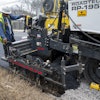



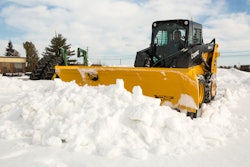
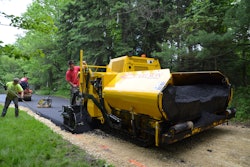




![Lee Boy Facility 2025 17 Use[16]](https://img.forconstructionpros.com/mindful/acbm/workspaces/default/uploads/2025/09/leeboy-facility-2025-17-use16.AbONDzEzbV.jpg?ar=16%3A9&auto=format%2Ccompress&fit=crop&h=135&q=70&w=240)

